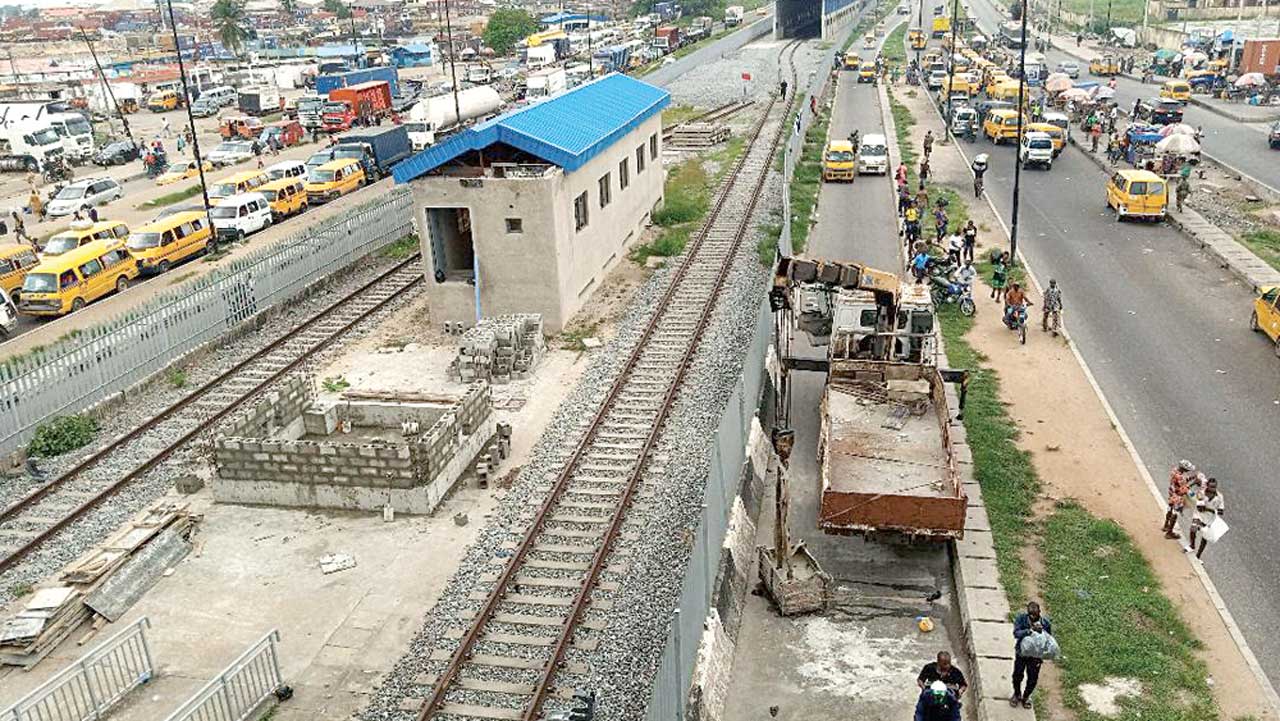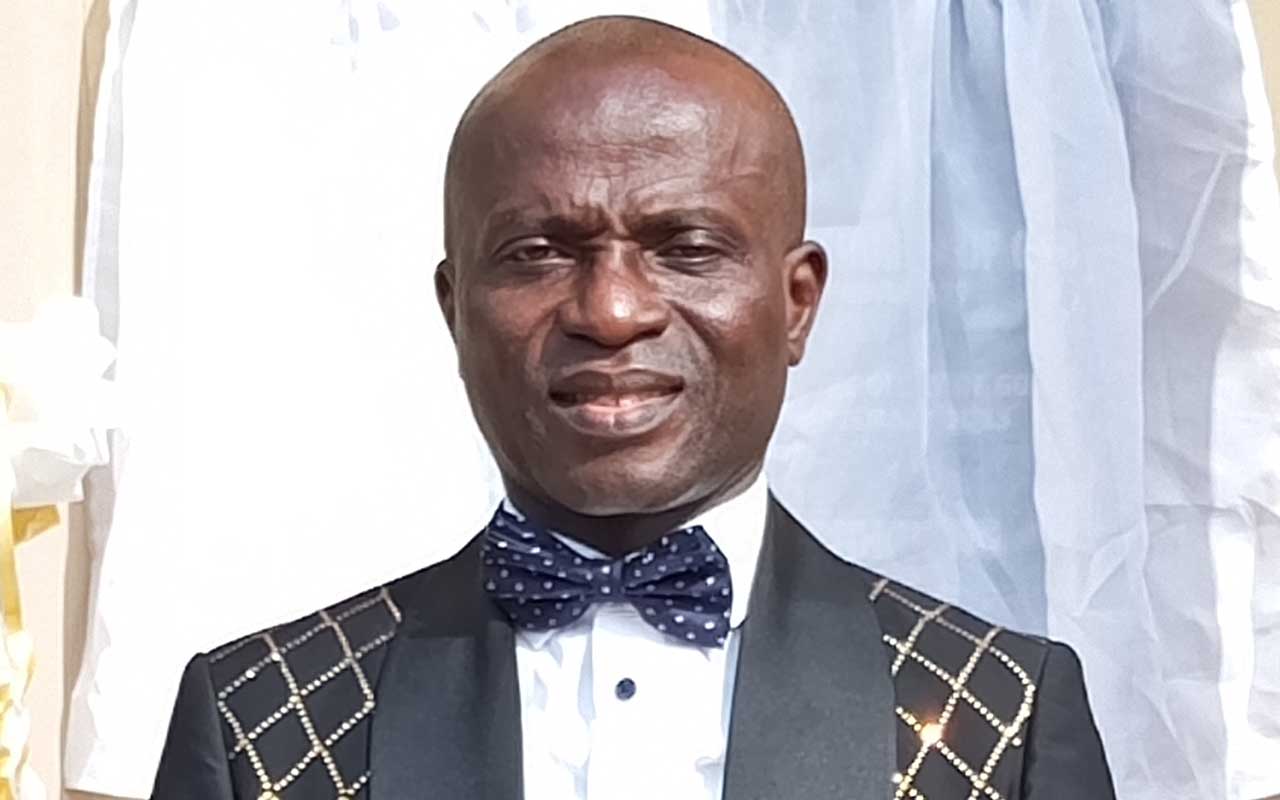
When the Lagos State government announced that the Blue Rail Line would commence commercial operations in the first quarter of 2023, many residents, especially those living along the Orile-Okokomaiko corridor were exhilarated that the pain they undergo while trying to connect Lagos Island from that axis would become a thing of the past.
But just when they started the countdown, the state government killed their joy, by adjusting the date to April. Alas, April ends today and commercial operations are not starting any time soon on the blue rail, which has been in the works for 15 years.
For those who have followed the rail project over the years, the shift in deadlines is nothing new given the several adjustments of completion dates since the days that Governor Babatunde Raji Fashola was in the saddle.
Speaking at the commissioning of the project earlier in the year, Lagos State Governor, Mr. Babajide Sanwo-Olu, blamed the many shifts in the completion deadline (before the All Progressives Congress (APC) took power at the centre in 2015) on alleged hostile policies of the then Federal Government.
When The Guardian visited the Mile 2 end of the project, last Wednesday, there were no signs that commercial operation would commence before the weekend. Some workmen were, however, on the ground putting finishing touches, just as an additional post was still being constructed beside the Mile 2 station.
The station verandas looked unkempt and the two main doors were partly damaged. The broken sections of the doors were patched with roofing zinc to restrain prying eyes.
Bolaji Ajose, one of the residents of the area is not surprised that the state government failed to fulfill its promise, noting that this is not the first time that it has disappointed. “And I am not sure it will be the last. It is really sad.”
He, nonetheless, expressed optimism about the project’s impact saying, “If it starts (commercial operation), one won’t have to be driving down to the Island. And this will reduce the number of cars on the roads. Commencement of operations will also reduce vehicular traffic and by extension, ease pressure on road infrastructure, in addition to reducing travel time,” Ajose said.
Another resident, Olatayo Ogunsola, said that she is eagerly waiting for the commencement of commercial operations.
“When completion of work on the rail project was announced, I was looking forward to when passengers would start going onboard. So, my plea to the state government is to speedily commence the train transportation service.”
For Kayode Amusan, the blue rail line project has taken too long to begin servicing the people that have been waiting anxiously, even though “I knew that it would be difficult to commence commercial operation in April because a lot still needs to be done.”
“Honestly, if the government can get this project right, it will be easy commute to work and back, with more development going on within the corridors, especially from Orile, to Amuwo, Ojo. Commercial bus operators may be forced to bring down their fares. Louts could also be done away with.
When President Muhammadu Buhari commissioned the project, Blue Rail Line was not completed, as there were still several things that needed to be fixed.
At the commissioning ceremony, Sanwo-Olu alluded to this when he said that the Blue Line would be operational after the completion of a 750-volt-ampere dedicated power supply source.
It was, however, gathered that the non-completion of the 750-volt-ampere is a major interruption to the commencement of the commercial operation. It was further learnt that the test runs that have been going on for months now were done using locomotive, which should not be.
The idea of a state-owned metropolitan train service was birthed to check traffic and ease movement across the state, which has over 20 million residents. Over the years, moving around the state has been largely by road due to the absence of a functional rail transportation system, while water transportation is still at a developing stage. As a result of this, a lot of man-hours are lost daily to the perennial chaotic traffic on Lagos roads.
That was when the idea of developing a light rail network for Lagos, as a response to the perennial traffic snarl became a major best option. Former Governor Bola Ahmed Tinubu, resuscitated the idea in the early 2000s, with a formal announcement of its construction in December 2003, after an earlier attempt by the Lateef Jakande-administration failed.
In 2008, the state, through the Lagos Metropolitan Area Transport Authority (LAMATA) made progress with the rail project, focusing initially on the Blue and the Red lines.
The entire Lagos State rail project is designed to run through various areas, under a seven-line network codenamed: Red, Blue, Green, Yellow, Purple, Brown, and Orange lines.
The Blue Line, which the state has exerted more energy on, is a 27 km-long rail project, connecting Okokomaiko to Marina. It is split into two phases. The first phase is from Marina to Mile 2, while the second phase is from Mile 2 to Okokomaiko, with the initial estimated completion date of 2011 for the first phase. This was, however, shifted midway to 2013, by Fashola.
However, the project suffered many delays, with the state government, and the supervising agency- LAMATA, sometimes giving contradictory reasons for the delay in meeting the numerous deadlines.
First Attempt At Constructing Light Rail
THERE was an attempt to establish a metro line in 1983. Flagged off on July 16, 1983, the project was expected to cost N689m, and the first phase was projected for completion in July 1986. But the project, which was to have 30 trains, each running 28.5 kilometers, on raised concrete tracks from Marina to Agege, was terminated two years after it started, and a year before the completion of the first phase.
Egypt’s Cairo Metro Line Up And Running
THE Cairo Metro, a similar project, which was to start operation after the first and second phases of the Lagos Metro Line had since taken off. It not only completed its Line 1 in 1987, but it also followed it up with two other lines. The construction of the Cairo Metro Line 1 started in 1982 after the French government agreed to give Egypt the necessary loan. The first section was opened on September 27, 1987, and the line was completed in 1989, connecting Helwan with El Marg, and consisting of 33 stations with a total length of 43 km, of which 4.7 km is underground. The line witnessed few developments since 1989 as New El Marg Station was added in 1999, to the northern end of the line, bringing its total length to 44.3 km. Helwan University Station was built between Wadi Houf and Ain Helwan stations.
Cairo’s metro network was greatly expanded in the mid-1990s with the building of Line 2, from Shoubra El Kheima to Cairo University, with an extension to Giza. The line includes the first tunnel under the Nile. The construction of the line was finished in October 2000, and was later extended to El Mounib.
The construction of Line 3 started in 2006, with the first phase opening on February 21, 2012, and the second phase starting in 2014. It has 29 stations, out of which two will be on grade and the remaining 27 stations underground, with a bored tunnel. The total length of the line is approximately 30.6 km of which 28.1 km is an underground section that became operational in June 2019.
And the city is not relenting, as it has commenced work on Line 4, planned to run from Haram District to New Cairo district, connecting Greater Cairo from West to East. It will cross the two branches of the Nile River and have a total length of 24 kilometres. It has an estimated completion date of 2024.
Addis Ababa Light Rail
ADDIS Ababa Light Rail, a light rail transportation system in Addis Ababa, Ethiopia is another contemporary of the Lagos Metro Line that has become a success story in terms of completion though now grappling with some challenges. A 17-kilometre (11 mi) line running from the city centre to industrial areas in the south of the city opened on 20 September 2015, after inauguration by Prime Minister Hailemariam Desalegn, service began on November 9, 2015, for the second line (west-east). The total length of both lines is 31.6 kilometres (19.6 mi), with 39 stations. Trains are expected to be able to reach maximum speeds of 70 km/h (43 mph).
The railway was contracted by China Railway Group Limited, and the Ethiopian Railways Corporation began the construction of the double-track electrified light rail transit project in December 2011, after securing funds from the Export-Import Bank of China. Trial operations got underway on February 1, 2015, and were followed by several months of testing. It is operated by the Shenzhen Metro Group.
This light-rail system was the first to be built in Sub-Saharan Africa. Of the two rail lines, the east-west line extends 17.4 kilometres (10.8 mi), stretching from Ayat Village to Torhailoch, and passing through Megenagna, Meskel Square, Legehar, and Mexico Square. The north-south line, which is 16.9 kilometres (10.5 mi) in length, passes through Menelik II Square, Merkato, Lideta, Legehar, Meskel Square, Gotera, and Kaliti.
The report, however, has it that the lack of spare parts has left 23 of the light rail’s 40 trams inoperable. This was just as low-ticket prices, overcrowded and limited services, along with electricity issues have made it difficult to generate enough income to cover operational costs.
Commenting on the botched commencement of commercial operation, the Consultant, Corporate Communication, LAMATA, Kola Ojelabi, said that, “the project suffered some delays in terms of escalators and the rest of it, which were held up at the ports for some time.”
He added that until the escalators and lifts are fixed, the commercial operation cannot start. “In terms of the operations, the tracks are there, the trains can run. What would assist people to get into the station very well is what we are fixing now, and we hope that would be completed by the end of May. Those are the things delaying the commencement of operation. If you get to all the stations now, you will see that those lifts and escalators are being fixed, and until that is done we cannot start commercial operation. It is not everyone that can go through the staircase, so, we have to do something that will make life easy for everyone. We would continue to do the test ride till probably the inauguration, and after the inauguration, we would commence operation.”






